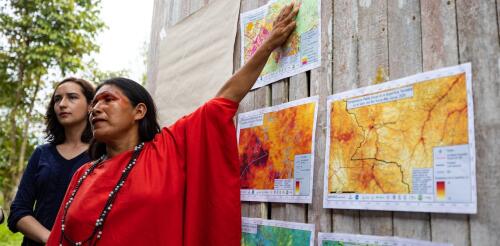Amazon river
Leer en español ou em português The Ashéninka woman with the painted face radiated a calm, patient confidence as she stood on the sandy banks of the Amonia River and faced the loggers threatening her Amazonian community. The loggers had bulldozed a trail over the mahogany and cedar saplings she had planted, and blocked the creeks her community relied on for drinking water and fish. Now, the outsiders wanted to widen the trail into a road to access the towering rainforests that unite the Peruvian and Brazilian border along the Juruá River. María Elena Paredes, as head of the Sawawo Hito 40 monitoring committee, said no, and her community stood by her. She knew she represented not just her community and the other Peruvian Indigenous communities, but also her Brazilian cousins downstream who also rely on these forests, waters and fish. Roads beget more roads. The Interoceanic Highway, shown here, allowed logge...
